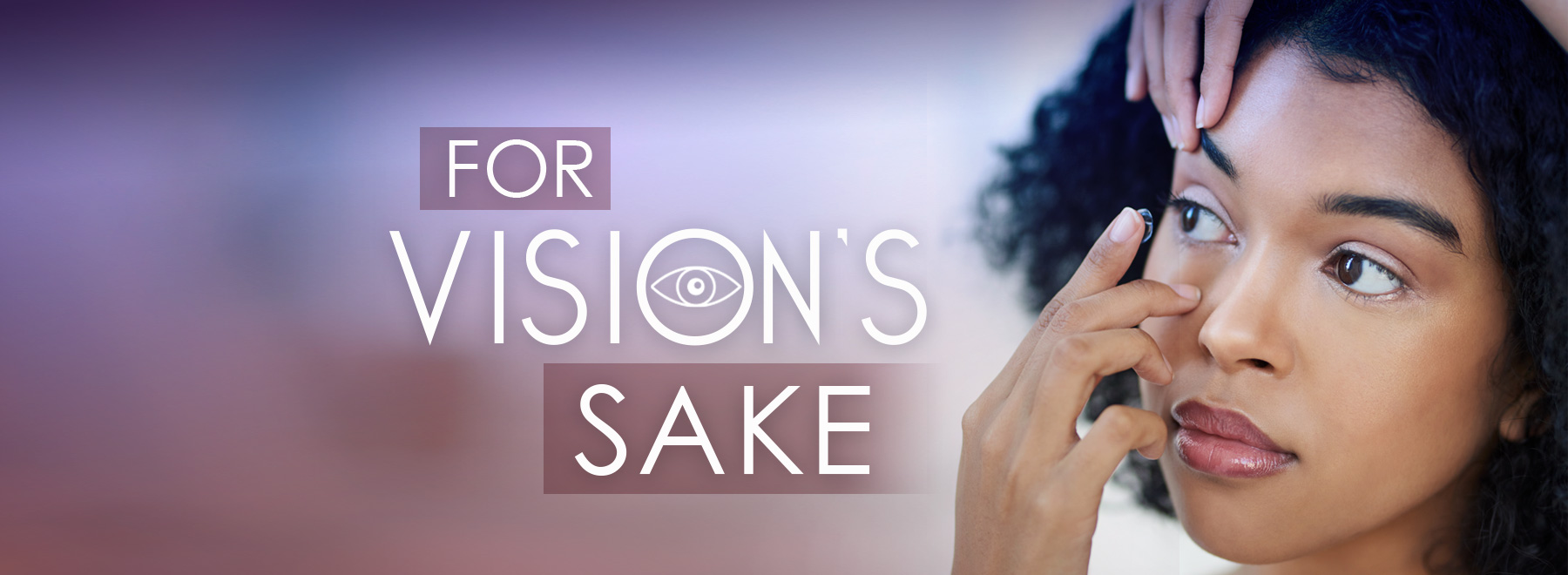Practice good contact lens hygiene, prevent eye damage
For as long as he can remember, Dr. Clayton Patrick slept in his extended-wear contact lenses all month, until it was time to replace them.

It wasn’t until medical school and his growing interest in eye care that he realized he could be putting his vision in jeopardy and began taking them out nightly. He’s fortunate, he said, not to have developed any serious eye infections over the years, given the risks.
The ophthalmologist and assistant professor at the University of Mississippi Medical Center sees patients weekly with corneal infections, many, he suspects, are related to poor contact lens hygiene.
“The dangerous part about these infections is that there isn’t necessarily a linear relationship between poor hygiene and the degree of infection,” said Patrick. “I have had patients that have abused contacts for years and never suffered an infection, and I have also had patients that have treated their contacts appropriately and still gotten devastating eye infections. I warn patients that any contact lens use, even appropriate use, is inherently a small but very real risk.”
When contact lenses are not worn and cleaned as recommended, they become uncomfortable because microscopic debris and wear and tear irritate the eyes, said Patrick, creating a virtual petri dish in which bacteria can thrive.
Early signs of an infection include discomfort, pain, redness, light sensitivity and tearing, said Dr. Roya Attar, assistant professor and director of optometric services in the Department of Ophthalmology.
“If a patient is experiencing any of these symptoms and fails to discontinue wearing their contacts and seek treatment, then they risk permanent vision loss from a contact lens infection,” Attar warned.
Most problems result from a patient sleeping in an old contact or failing to replace one as instructed, said Attar, who once had a patient with a central corneal ulcer that resulted in permanent vision loss. Even after a corneal transplant, the patient’s vision was never again 20/20.
That’s why at the first sign of discomfort, wearers should immediately remove the lens, start using artificial tears and back-up spectacles, and make an appointment with an eye doctor, she said. In fact, Attar recommends that all contact lens wearers own a pair of glasses, just in case they develop an infection.
Tanika Spann learned this the hard way. After regularly sleeping in extended-wear lenses and not replacing them as often as prescribed, she developed an irritated eye that only felt better after using eye drops. A visit to an ophthalmologist confirmed that she had an eye infection, for which she was prescribed an antibiotic and steroid drops, and instructed to wear glasses until healed.
“I hadn’t had any glasses for over 10 years,” said Spann, of Clinton, who has worn contact lenses for nearly 30 years. “I had to get me some glasses the same day I was diagnosed with the eye infection. That day, I got two pairs of glasses, just in case.”
Good contact lens hygiene is the best way to be proactive, minimizing the likelihood that wearers will develop problems, said Attar and Patrick.
In general, how long a lens is worn depends on the type. Daily lenses should be discarded and replaced after a single day’s use, while extended wear lenses should be disposed of as prescribed, usually bi-weekly or monthly. Though the extended variety can be reused for several days, they should be cleaned nightly, said Patrick.
Patrick said he reminds patients to wash their hands with soap and water any time they are handling contacts and to avoid tap water when cleaning both the lens and the case. He also emphasizes replacing them as prescribed.
“When used as prescribed and with proper hygiene, both types of soft contact lens are reasonably safe,” said Patrick. “I find that the patient’s lifestyle and needs dictate which lens would be best for them. That being said, there is potential for abuse in using both types, and abuse of either type incurs a huge risk of devastating eye infection.”
Attar said the best contact lens is the one that feels best for each person.
“When a contact lens feels the best on a patient’s eyes, a patient sees their best,” she explained. “My personal preference and professional recommendation is dailies contact lenses because hygienically they are the cleanest --because you put in a new lens each day -- which makes them the safest.”
While the FDA has approved some brands to be slept in for 30 days, both doctors said it’s not that black and white of an issue.
“Studies have shown that sleeping in these contacts imparts a higher risk of corneal infection compared to non-wearers that many providers find to be unacceptable,” said Patrick.
Patrick therefore advises patients to take their lenses out every night for cleaning and to leave them out until the next day.
Attar takes a different approach to the sleeping-in quandary.
“Eye doctors never comfortably say ‘yes’ to this question,” she explained. “However, we are also not naive and know that approximately half of our patients sleep in their contacts. That is why there are contact lenses that are approved to be slept in. When examining a patient who wears contact lenses, I ask about their lifestyle, and I encourage them to honestly express to me their preference. Upon examination, if I consider their eyes healthy enough for extended-wear contact lenses, I will approve them for contacts that they can sleep in without any guilt.”
Though younger patients, males in particularly, tend to have the worst contact lens hygiene, said Attar, not all older patients get a gold star.
Said Patrick: “I have seen a surprising amount of older patients who have used their contacts incorrectly for years, simply because someone may not have taken the time to walk them through correct hygiene.”
Weeks after her diagnosis and treatment, Spann visited Attar for an annual exam and described her ordeal. She listened intently to Attar’s recommendations and, at 44, has made some changes to her eye-care routine.
“I will no longer sleep in my contacts,” Spann said. “I switched from extended wear to dailies. I will be wearing my glasses more often than my contacts.”
To make an appointment with UMMC eye and vision (ophthalmology) or for general information, call (601) 984-5020.
The above article appears in CONSULT, UMMC’s monthly e-newsletter sharing news about cutting-edge clinical and health science education advances and innovative biomedical research at the Medical Center and giving you tips and suggestions on how you and the people you love can live a healthier life. Click here and enter your email address to receive CONSULT free of charge. You may cancel at any time.



